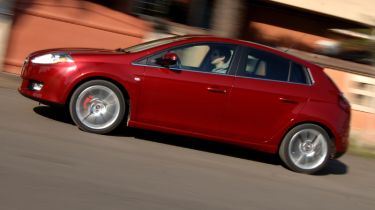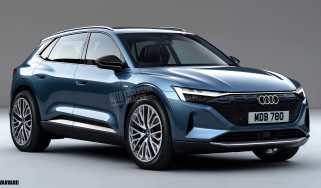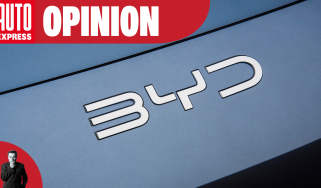Fiat Bravo
The Bravo is a good all-rounder that would suit those looking for a quality family hatchback

Although the Stilo it replaces was no more than average, the new Bravo represents a vast improvement. As well as driving impressively, the latest Fiat has a strong engine range, and this high-spec model offers all the style, both inside and out, that we have come to expect from the brand. However, the quality of the finish isn’t special, and rear space is tight. What’s more, it doesn’t appear to beat rivals in any specific area. But if you’re in the market for a good-looking, well equipped family hatchback put the Bravo on your list.
There’s no doubt about it – few tears will be shed over the departing Fiat Stilo. Even company bosses admit the Ford Focus rival has been a sales disaster, which is why its replacement has arrived in record time.
The all-new Bravo resurrects the name of the previous-generation car. Taking only 18 months to go from boardroom to showroom, most of its development was done in the virtual world – and the result goes on sale in the metal this summer.
Unlike the original Bravo, only a five-door bodystyle will be available, yet Fiat claims it sets new standards for quality and driving dynamics. So can it really challenge the Focus, as well as the Vauxhall Astra and VW Golf, for class honours? Well, the new machine has certainly hung on to its Italian style – particularly in this top-of-the-range specification.
In standard trim, the Bravo resembles a scaled-up version of the company’s Grande Punto, and is awash with attractive details, including bold headlights, a chrome split grille and a chunky rear end. But with a bodykit, 17-inch alloys and lowered suspension, the Sport is the most striking of the bunch. Lesser models, which ride higher and get smaller wheels, aren’t as convincing.
The interior is stylish, with deep-set instrument dials – which will be familiar to Alfa Romeo owners – a piano-black centre console, plus a large infotainment screen and a carbon fibre-look covering on the facia. Under closer examination, however, there is lots of scratchy plastic below the eye line, and the materials don’t feel quite as sturdy as those in a Focus, Astra or Golf. What’s more, while the 400-litre boot is deep, rear room is cramped and the front seats are short on thigh support.
Mind you, there’s not much to be disappointed about under the bonnet. As well as Fiat’s smooth M-JET diesel units, new 1.4-litre turbo T-JET petrol engines join the range with outputs of 120bhp and 150bhp.
Our model was fitted with the latter, and it felt responsive and willing to rev. With 206Nm at 2,000rpm, it lacks the torque of its diesel counterparts and isn’t quite as flexible, but still offers a decent blend of performance, economy and refinement. Handling is tidy, safe and much more grown-up than that of the old Stilo. But the Dualdrive electric power-steering system takes away any driver involvement, and our Sport model suffered from an excessively firm, crashy ride.
There’s plenty of equipment, however. Even Active variants feature side airbags and climate control as standard, while the Dynamic adds alloys and the Sport gets Fiat’s hands-free mobile phone kit plus a slot for MP3 players. But with this flagship version set to cost as much as £17,000, you’ll have to pay a high price for all the kit.







